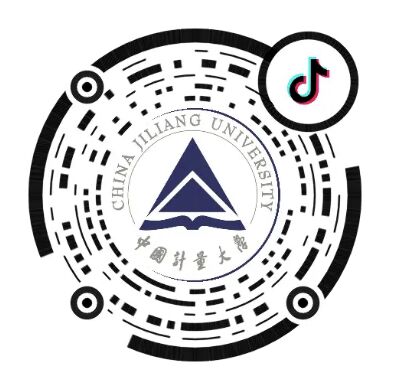鐑棬鏂伴椈鎺掕
鍩轟簬騫叉秹鍨嬫墿鏁f嘗鍏夎氨瀛︾殑浜鴻剳琛€娑叉祦閲忕洃嫻?/h1>
鏉ユ簮: 鍏夊涓庣數瀛愮鎶€瀛﹂櫌
浣滆€咃細寮犱紶浜?/span>
娣誨姞鏃ユ湡:2018-06-12 08:37:09
闃呰嬈℃暟錛?script>_showDynClicks("wbnews", 1558477759, 2913)
Interferometric diffusing-wave spectroscopy for blood flow monitoring of the human brain
銆€銆€錛堝熀浜庡共娑夊瀷鎵╂暎娉㈠厜璋卞鐨勪漢鑴戣娑叉祦閲忕洃嫻嬶級
銆€銆€鎶ュ憡鏃墮棿錛?018騫?鏈?9鏃ワ紙鏄熸湡浜岋級涓婂崍10錛?0
銆€銆€鎶ュ憡鍦扮偣錛氳禌鍗氬崡妤?03-1浼氳瀹?br />銆€銆€鎶ュ憡浜猴細鍛ㄦ枃淇婂崥澹紙緹庡浗鍔犲窞澶у鎴寸淮鏂垎鏍★級
銆€銆€鎶ュ憡鍐呭綆€浠嬶細
銆€銆€Though cerebral blood flow (CBF) is a target parameter in neurocritical care, a non-invasive and continuous CBF monitor has remained elusive. Conventional imaging modalities such as Magnetic Resonance Imaging (MRI) and Computed Tomography (CT) are impractical for continuous monitoring, while Transcranial Doppler (TCD) Ultrasound measures velocity, not flow, and can be technically challenging. Near-infrared light technologies to measure CBF in adult humans face a unique challenge; they must sense light fluxes that are both coherent and very weak, returning from deep beneath the surface. The most successful optical CBF technology for the human brain, Diffuse Correlation Spectroscopy (DCS), uses one or more single/few mode photon counting channels, making DCS systems either expensive, or restricted in terms of speed and photon counts. Here, we reduce cost and improve performance by liberating optical CBF monitors from the expense and complexity of photon counting. The fundamental innovation is an optical 鈥渢rick鈥?known as interferometry, where the weak optical field returning from the brain is boosted by a strong reference field. This enables us to replace photon counting detectors with inexpensive pixels on a CMOS camera, in a method called interferometric Diffusing Wave Spectroscopy (iDWS). We discuss the implications of this paradigm shift for CBF monitoring and the field of diffuse optics in general.
銆€銆€鎶ュ憡浜虹畝浠嬶細
銆€銆€Dr. Wenjun Zhou received a B.Sc. degree in Science and Technology of Optical Information in 2008 and an M.Sc degree in Optical Engineering in 2011, both from China Jiliang University. In 2010, he worked as a Visiting Project Officer in School of Chemical and Biomedical Engineering in Nanyang Technological University, Singapore. In 2015, he received a Ph.D. degree under the supervision of Prof. Jacques Albert in the Advanced Photonic Components Group in Carleton University, Canada. He was awarded the Chinese Government Award for Outstanding Self-Financed Students Abroad in 2013 and the Senate Medal for Outstanding Academic Achievement of Carleton University in 2015. Since 2016, he is working with Prof. Vivek J. Srinivasan as a postdoctoral fellow in the Department of Biomedical Engineering in University of California Davis. His main research interests include interferometric diffusing-wave spectroscopy of the human brain, optical fiber sensors, fiber Bragg gratings, ultrathin gold film, and surface plasmon resonance sensors. He has published 22 papers in Optica, Laser & Photonics Reviews, Optics Letters, Optics Express and so on (14 papers with first or co-first author, and h-index of 14).
鍏夌數瀛﹂櫌
2018騫?鏈?1鏃?/p>
Interferometric diffusing-wave spectroscopy for blood flow monitoring of the human brain
銆€銆€錛堝熀浜庡共娑夊瀷鎵╂暎娉㈠厜璋卞鐨勪漢鑴戣娑叉祦閲忕洃嫻嬶級
銆€銆€鎶ュ憡鏃墮棿錛?018騫?鏈?9鏃ワ紙鏄熸湡浜岋級涓婂崍10錛?0
銆€銆€鎶ュ憡鍦扮偣錛氳禌鍗氬崡妤?03-1浼氳瀹?br />銆€銆€鎶ュ憡浜猴細鍛ㄦ枃淇婂崥澹紙緹庡浗鍔犲窞澶у鎴寸淮鏂垎鏍★級
銆€銆€鎶ュ憡鍐呭綆€浠嬶細
銆€銆€Though cerebral blood flow (CBF) is a target parameter in neurocritical care, a non-invasive and continuous CBF monitor has remained elusive. Conventional imaging modalities such as Magnetic Resonance Imaging (MRI) and Computed Tomography (CT) are impractical for continuous monitoring, while Transcranial Doppler (TCD) Ultrasound measures velocity, not flow, and can be technically challenging. Near-infrared light technologies to measure CBF in adult humans face a unique challenge; they must sense light fluxes that are both coherent and very weak, returning from deep beneath the surface. The most successful optical CBF technology for the human brain, Diffuse Correlation Spectroscopy (DCS), uses one or more single/few mode photon counting channels, making DCS systems either expensive, or restricted in terms of speed and photon counts. Here, we reduce cost and improve performance by liberating optical CBF monitors from the expense and complexity of photon counting. The fundamental innovation is an optical 鈥渢rick鈥?known as interferometry, where the weak optical field returning from the brain is boosted by a strong reference field. This enables us to replace photon counting detectors with inexpensive pixels on a CMOS camera, in a method called interferometric Diffusing Wave Spectroscopy (iDWS). We discuss the implications of this paradigm shift for CBF monitoring and the field of diffuse optics in general.
銆€銆€鎶ュ憡浜虹畝浠嬶細
銆€銆€Dr. Wenjun Zhou received a B.Sc. degree in Science and Technology of Optical Information in 2008 and an M.Sc degree in Optical Engineering in 2011, both from China Jiliang University. In 2010, he worked as a Visiting Project Officer in School of Chemical and Biomedical Engineering in Nanyang Technological University, Singapore. In 2015, he received a Ph.D. degree under the supervision of Prof. Jacques Albert in the Advanced Photonic Components Group in Carleton University, Canada. He was awarded the Chinese Government Award for Outstanding Self-Financed Students Abroad in 2013 and the Senate Medal for Outstanding Academic Achievement of Carleton University in 2015. Since 2016, he is working with Prof. Vivek J. Srinivasan as a postdoctoral fellow in the Department of Biomedical Engineering in University of California Davis. His main research interests include interferometric diffusing-wave spectroscopy of the human brain, optical fiber sensors, fiber Bragg gratings, ultrathin gold film, and surface plasmon resonance sensors. He has published 22 papers in Optica, Laser & Photonics Reviews, Optics Letters, Optics Express and so on (14 papers with first or co-first author, and h-index of 14).
鍏夌數瀛﹂櫌
2018騫?鏈?1鏃?/p>








